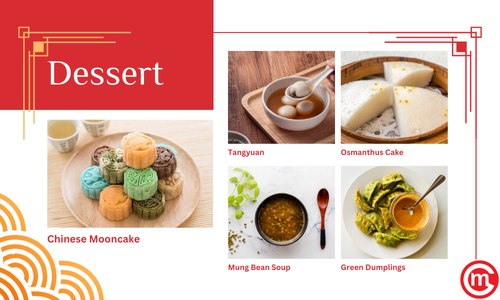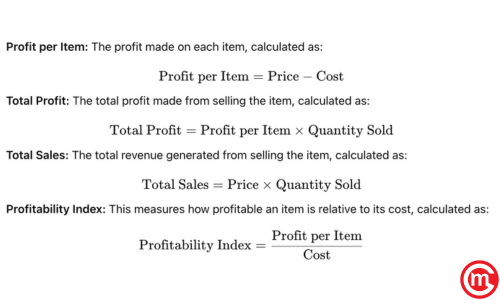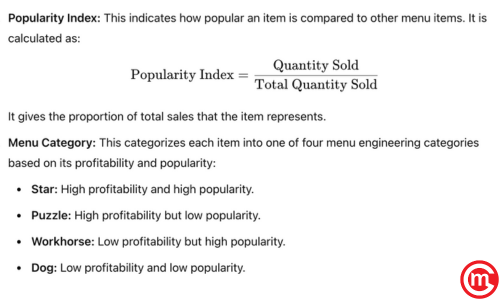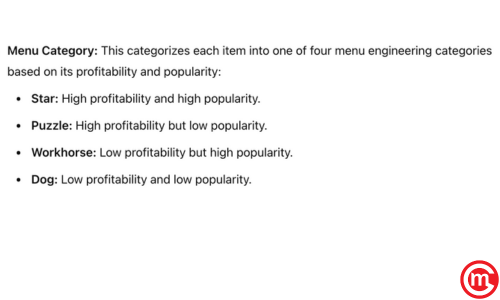How to Do Menu Engineering: Complete Guide to Restaurant Profitability
How to Do Menu Engineering
If you're looking to increase the profitability of your restaurant, menu engineering is a powerful tool. It involves analyzing and strategically designing your menu to highlight profitable items and promote a better dining experience. Here’s a step-by-step guide to mastering menu engineering for your restaurant.

Step 1: Understand the Basics of Menu Engineering
Menu engineering is a data-driven process that involves categorizing your menu items based on their profitability and popularity. The goal is to promote dishes that are both profitable and popular while reworking or eliminating those that aren't performing well. This approach ensures that every dish on your menu contributes to your bottom line.
Key Terms to Know:
- Profitability: The amount of money left after subtracting the cost of ingredients from the selling price.
- Popularity: How often a menu item is ordered relative to other items.
- Menu Matrix: A visual representation categorizing menu items into four groups: Stars, Plowhorses, Puzzles, and Dogs.
Step 2: Categorize Your Menu Items
To categorize your menu items, you’ll need to gather data on the cost of ingredients, selling price, and quantity sold. This information will allow you to calculate the following metrics:


Step 3: Create a Menu Matrix
Once you have calculated the profitability and popularity indexes, plot your menu items on a menu matrix. This will help you identify which items belong to each of the following categories:
- Stars: High profitability and high popularity. These are your best-sellers that you should highlight and promote.
- Plowhorses: High popularity but low profitability. Consider reworking recipes or adjusting prices to improve margins.
- Puzzles: High profitability but low popularity. Promote these items more or reconsider their placement on the menu.
- Dogs: Low profitability and low popularity. These items may need to be removed from the menu.

Step 4: Optimize Menu Design and Placement
The design of your menu can significantly influence customer choices. Use the following tips to enhance your menu:
- Menu Psychology: Position your most profitable items (Stars) in the prime areas of the menu, such as the top-right corner. Use eye-catching designs and descriptions to draw attention.
- Descriptive Language: Use compelling descriptions that highlight the unique aspects of the dish, such as ingredient quality or cooking method.
- Visual Cues: Add icons or boxes around your Stars to make them stand out. Limit the use of these elements to avoid clutter.

Step 5: Price for Profitability
Set prices strategically to maximize profitability. Consider the following strategies:
- Remove Currency Symbols: Studies show that removing currency symbols can reduce price sensitivity.
- Use Decoy Pricing: Include a high-priced item to make mid-range items appear more affordable.
- Round Numbers: Use whole numbers instead of decimal pricing for a cleaner look and feel.
Step 6: Implement and Test Changes
After making adjustments to your menu, monitor its performance over time. Use sales data to measure the impact of your changes on profitability and customer satisfaction. If necessary, tweak your menu based on these insights.
Step 7: Regular Review and Adaptation
Menu engineering is an ongoing process. Regularly review your menu to adapt to changing customer preferences, seasonal availability, and cost fluctuations. By continuously optimizing your menu, you can ensure sustained profitability and a better dining experience for your customers.
Conclusion
By following these steps, you can create a well-engineered menu that maximizes both profitability and customer satisfaction. Remember, menu engineering is not a one-time task but an ongoing process that should be revisited regularly. Use this guide to refine your menu, improve your pricing strategy, and ultimately boost your restaurant’s bottom line.
About US | OCM Profile
OCM (OnCoffeeMakers.com) was started in 2007 with the first webpage about coffee machines. And for a number of years, we focused on helping people find their desired coffee machine (we still are helping folks with that! So, if you are looking for coffee machines for office or restaurants - check out the link).
In 2010, we started getting enquiries on restaurant marketing and we start to help food and beverage brands with their marketing. Below are campaigns and events that we have done over the years:
OCM's campaigns: F&B Marketing Ideas by OCM
OCM's Events: F&B Industry events by or with OCM
Check out this restaurant marketing guide to learn more about the many campaigns and companies we have worked with.
Since then, we have also created many marketing workshops and classes for the F&B industry. Many of these modules are still running in tertiary institutions such as Temasek Polytechnic Skillsfuture Academy and also ITE College East COC classes, below are some snippets of our lectures and workshops:
OCM’s F&B workshops: Food and Beverage Marketing Lectures | Workshops - click to watch classes on customer journey map, JTBD and more.
So, if you are looking for industry practitioners to help you scale your coffee or F&B businesses, do drop us a message or book an appointment. Do also check out our various social media platforms on regular F&B and coffee market updates:
For regular coffee (F&B) related videos: OCM Youtube
For Daily Coffee Inspiration (fun coffee content): OCM IG
For insights into the coffee (F&B) industry: OCM LinkedIN
PS: For the coffee lovers, we continue to share coffee articles (and videos) and have also started a free coffee class section (with free online coffee training supported by coffee partners).